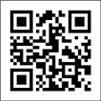資料紹介
The audio-lingual method is a style of teaching methods that prevailed fifties through late sixties. It focuses on oral practice exercises to develop oral proficiency and sets aside the study of grammar or literature as the goal of foreign language teaching. Also, it especially centers on the acquisition of the grammatical structure and pattern rather than the understanding of the contexts and meanings. It is because the notion of the audio-lingual method is based on the belief that grammar is acquired unconsciously. (My translation from M.フィノキアーロ、C.ブラムフィット/織田 稔、萬戸 克憲訳、1987 『言語活動中心の英語教授法』on page 10 ) This method is still in use, however, not as the foundation of a course, but integrated to use in individual lessons. The reason is that it included crucially defective methodology compared with other teaching methods that appeared later.
First of all, the audio-lingual method is based on both behavioral psychology and structural linguistic theory. It was preceded by ASTP (Army Special Training Program) used for teaching the people involved in military during and post WWII, and Behaviorism was attracted among U.S. in fifties; therefore errors were seen as unfavorable and accuracy was required.
 All rights reserved.
All rights reserved.
資料の原本内容 ( この資料を購入すると、テキストデータがみえます。 )
The audio-lingual method declining its credibility
The audio-lingual method is a style of teaching methods that prevailed fifties through late sixties. It focuses on oral practice exercises to develop oral proficiency and sets aside the study of grammar or literature as the goal of foreign language teaching. Also, it especially centers on the acquisition of the grammatical structure and pattern rather than the understanding of the contexts and meanings. It is because the notion of the audio-ling...








